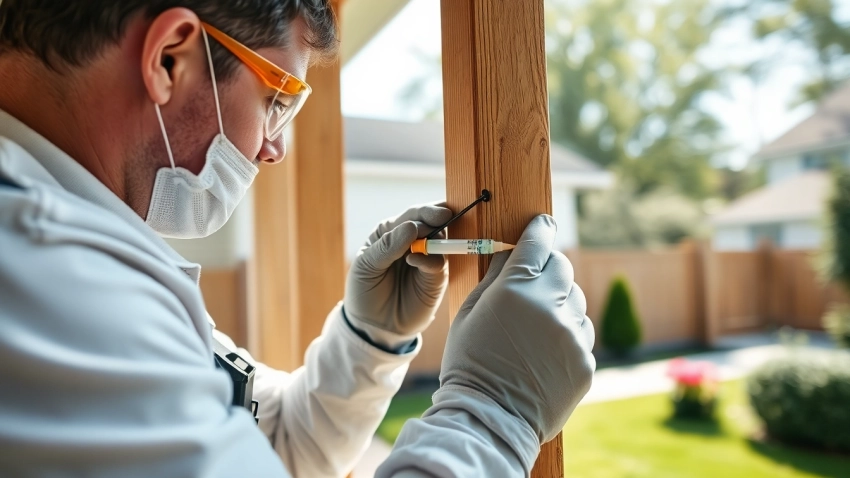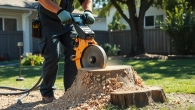
Comprehensive Guide to Effective Termite Treatments for Homeowners
Understanding Termite Treatments
Termites are notorious pests that can cause significant damage to homes and properties if left unchecked. Understanding the various termite treatments available is the first step in mitigating the risks associated with these wood-destroying insects. In this section, we’ll explore what termites are, discuss the importance of timely treatments, and identify common signs of infestation.
What Are Termites?
Termites are social insects that primarily feed on cellulose, which is found in wood, paper, and vegetation. They are classified into several types, with the most common being subterranean, drywood, and dampwood termites. Each type has distinct behaviors and nesting habits that determine the most effective treatment strategies. Subterranean termites, for instance, build their colonies in soil and can enter buildings through cracks in the foundation, while drywood termites live within the wood they consume. Understanding these categories is crucial for formulating effective pest control strategies.
The Importance of Timely Treatments
Delaying termite treatment can lead to catastrophic damage. Termites can cause structural damage that may cost thousands of dollars to repair. Implementing timely treatment not only protects your investment but also minimizes the risk of health hazards associated with mold and decay caused by termite-induced moisture. According to pest control experts, a proactive approach to termite management, including routine inspections and treatments, significantly reduces the likelihood of infestations.
Common Signs of Infestation
Identifying a termite infestation early is key to effective treatment. Common signs include:
- Swarmers: Winged termites emerging from the ground or wood are often the first sign of an infestation.
- Sawdust or Frass: This is a sign of drywood termites, which eject droppings resembling small pellets.
- Hollow-Sounding Wood: If tapping on wood produces a hollow sound, it may indicate extensive termite damage.
- Wood Damage: Visible tunnels and exit holes in wood structures are strong indicators of termite activity.
Types of Termite Treatments
There are various methods to combat termite infestations, each with specific advantages and applications. In this section, we’ll detail liquid chemical treatments, baiting systems, and natural or DIY options.
Liquid Chemical Treatments
Liquid chemical treatments are among the most commonly used methods to control termite populations. These treatments include:
- Barrier Treatments: A trench filled with termite liquid is applied around the foundation of a home. This method creates a chemical barrier that prevents termites from entering.
- Soil Treatments: Applied directly to the soil, these chemicals create a barrier that termites cannot penetrate. This approach is particularly effective against subterranean termites.
- Foam Treatments: Foam insecticides can penetrate wood and other hard-to-reach areas to kill termites directly.
Recent advancements in termiticides have led to products that are not only effective but also more environmentally friendly.
Baiting Systems Overview
Baiting systems work by luring termites into a bait station filled with a slow-acting insecticide. Termites consume the bait and return to the colony, effectively spreading the poison among other members. Key features of these systems include:
- Continuous Monitoring: Bait stations monitor termite activity and can be adjusted or replaced as needed.
- Long-Term Efficacy: Bait systems can reduce termite populations over time, providing ongoing protection.
- Environmental Safety: Since the chemicals are confined to bait stations, there is minimal risk to the environment and non-target organisms.
Natural and DIY Options
For homeowners looking for eco-friendly alternatives, natural and DIY termite treatments are available. Some popular methods include:
- Boric Acid: A common ingredient in many natural treatments, boric acid disrupts a termite’s digestive system and is often used in powder form.
- Essential Oils: Oils such as orange oil and neem oil may repulse or kill termites. These should be used in conjunction with other methods for best results.
- Cardboard Traps: This DIY method attracts termites to a piece of cardboard which can then be disposed of.
While these methods may be less destructive to the environment, they often require more frequent applications and might not be as effective for severe infestations.
How to Choose the Right Treatment
Selecting the right termite treatment can be overwhelming given the many options available. Here, we will break down the factors to consider when making this crucial decision, including whether to go professional or manage the situation yourself, and how to weigh the costs.
Factors to Consider
When choosing a termite treatment, consider the following:
- Type of Termite: Identification of the termite species is essential, as treatment methods may vary.
- Extent of Infestation: Larger infestations typically require professional treatment, while minor issues may be manageable with DIY methods.
- Structure Type: The construction type of your home can influence treatment effectiveness. Some methods may be better suited for particular building materials.
- Environmental Impact: Eco-conscious homeowners may prefer less toxic options, which can affect their choice.
Professional vs. DIY Treatments
Professional pest control services provide the expertise and resources necessary to manage significant infestations effectively. Benefits of hiring a pro include:
- Thorough Inspections: Professionals can conduct detailed inspections that a homeowner may miss.
- Access to Advanced Tools: Many treatments are best executed with specialized equipment.
- Long-Term Guarantees: Many pest control companies offer warranties on their services, providing added peace of mind.
On the other hand, DIY treatments can be cost-saving and allow homeowners to take immediate action. However, they may lead to incomplete pest control or inadequate treatment if not executed correctly.
Cost Considerations of Termite Treatments
The cost of termite treatment can vary widely based on several factors:
- Infestation Level: More extensive damage usually results in higher costs to treat.
- Type of Treatment: Chemical treatments might be more costly upfront but provide longer-lasting protection compared to some DIY approaches.
- Property Size: Larger properties require more treatment solutions, increasing the overall cost.
Investing in prevention and early detection can save money in the long run. Scheduling regular inspections with professionals can help in identifying potential issues early.
Steps for Effective Termite Management
Once you’ve chosen a treatment plan, effective termite management involves several critical steps. Here’s how to approach the situation.
Initial Inspection and Assessment
The first step is to perform a comprehensive inspection of your property. This involves:
- Visual Inspection: Check for visible signs of termites around the home, including wood damage and mud tubes.
- Professional Inspection: Engaging a pest control professional can provide a more thorough assessment, identifying hidden infestations.
- Documentation: Take detailed notes and photographs to keep track of damage extent and locations.
Implementing Treatment Solutions
Based on your chosen solution, treatment methods should be executed as follows:
- Follow Instructions: Whether DIY or professional, in-depth adherence to treatment guidelines is essential for success.
- Notify Others: If you live in a multi-family unit, inform your neighbors of the situation since termites often spread.
- Monitor Results: Observe the treated areas closely for signs of continued activity.
Ongoing Monitoring and Prevention
Post-treatment protection is vital to ensure termites do not return. Key strategies include:
- Routine Inspections: Schedule annual inspections with professionals to catch any resurgence early.
- Moisture Control: Fix leaks and control moisture in and around the home, as termites thrive in humid environments.
- Maintain Landscape: Keep wood and soil away from the foundation and ensure proper drainage to create barriers against termite entry.
Frequently Asked Questions About Termite Treatments
Many homeowners have questions regarding termite treatments. Here we’ll address some common inquiries.
How Effective Are Termite Treatments?
Effectiveness depends on various factors including the type of treatment used and the species of termite. Chemical treatments generally offer immediate results, while bait systems can take longer but promise sustained termite population control.
Can Termite Treatments Be Preventive?
Absolutely! Preventive treatments can be applied even without an active infestation. Regular inspections and preventative chemical barriers are crucial to safeguard your property from future infestations.
What to Expect During Treatment?
During the treatment, you may need to vacate the property depending on the method used and the chemicals applied. Professional services will often provide detailed instructions on what to anticipate during and after treatment.












Leave a Reply